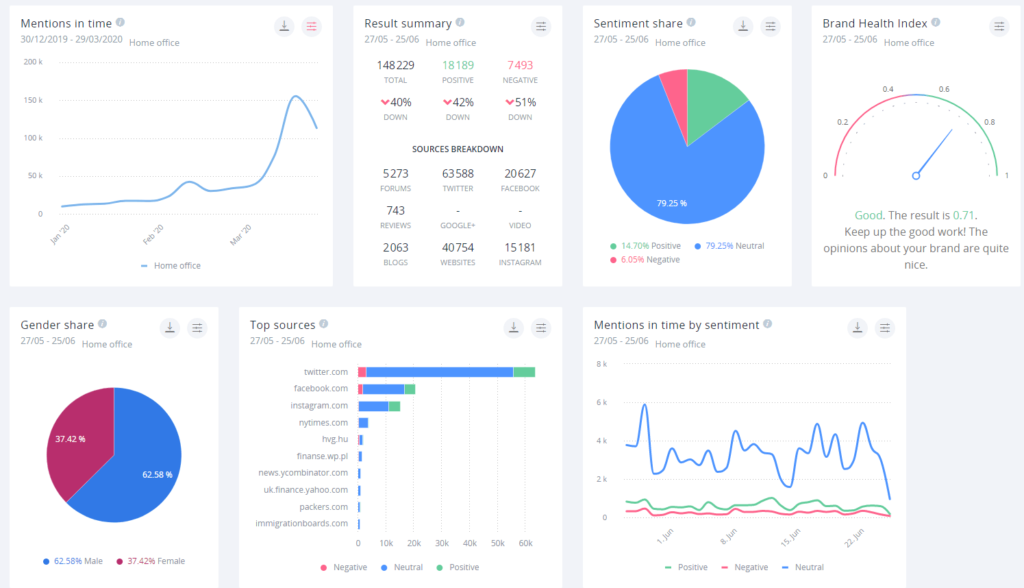The basics of marketing research
What is marketing research?
Market research is the act of gathering data regarding products, competitors, and customers, and using that data to draw insights. These insights are then used to set goals and map out a business strategy.
Marketing research is commonly confused with market research – however, there is a major difference between the two. Market research is concerned with the current state of a given market. It can be used to examine past trends and make predictions about the future. Marketing research, however, tells us the best way to reach customers on a given market.
Why is marketing research important?
Simply put, marketing research tells you how to reach your customers. By researching your products, your competition, and the clientele’s reaction to both, you can draw insights – learn what works and what doesn’t.
Without marketing research, your options are to either stumble in the dark hoping to strike gold, or to parrot someone else’s strategy. Needless to say, neither of these choices is very good.
The key elements of marketing research
Marketing research can be focused on a specific aspect of a market, or it can be holistic. There are four primary areas of interest:
- Competition research
- Product research
- Audience research
- Communication channel research
Your research efforts can focus on any of these topics, or include all of them – it all depends on the situation. For a brand-new campaign, you should thoroughly look at all four of these. On the other hand, if you’re trying to fix a specific issue, you’ll probably only need one or two of these branches.
Competition research
Competition research tells you everything there is to know about your competitors. This, in turn, tells you how you stack up.
When performing competition research, consider the following questions. Am I a more popular choice than my competitor? If not, why? Who are my competitor’s main customers? What about their products or services is different from me? What do their customers expect that I can provide?
Answering these questions provides you with the tools you need to gain the upper hand on your competition.
Product research
Product research, as the name suggests, focuses on specific products or services on the market. While it may be tempting to only examine the success stories – the products everybody wants – let’s not forget that failures can tell us even more. After all – you need to know what the consumers want, but also what they don’t want!
Some key questions to consider: what did this product aim to accomplish? Did it fulfill its purpose well? Did the customers respond to it? Did it bring any innovations to the table?
Product research tells you a lot about customer expectations within your niche. Launching a new product is all well and good – as long as there are people who want it!
Audience research
Audience research ensures you know what the customers in your niche are most interested in. Advanced research tools and techniques, such as social listening, can tell you everything you’d ever want to know about a given market’s consumers.
Some of these valuable nuggets of information include: what makes customers commit to a purchase decision? What makes them choose one product over the other? Do they tend to stay loyal to brands, or do they shop around? What problems do they want solved? Are they willing to give new things a try, or do they prefer the old and familiar?
Every market’s audience is different – which means it requires a different approach every time. Audience research will tell you exactly how to meet their expectations.
Communication channel research
And, finally, communication channel research. This branch of market research will tell you the best way to reach your customers. This, of course, differs with demographics and the type of market you’re in.
Some people prefer traditional methods of contact – phone calls and email. Newer generations are more comfortable with social media. Communication channel research will tell you the best way to contact your audience.
Do it often enough, and you may discover new communication channels that haven’t yet been discovered by the competition. This will help you establish yourself as a trailblazer and attract more customers.
Social listening – the swiss army knife of marketing research
Marketing research is conducted in a variety of methods. Focus groups need no introduction – they’re one of the most reliable ways of getting in touch with “the man on the street”. In a similar fashion, computer-assisted telephone interviews (CATI) enjoyed a degree of popularity, but have since fallen off.
One of the most important innovations in the marketing research space has been the explosive rise of social media. Companies make good use of the wealth of information customers share on social platforms – a practice called social listening.

An example analysis of social media data for the keyword “Home Office”.
In essence, social listening is aggregating every public conversation regarding a certain topic – such as your product, or your competitor’s recent marketing campaign. By analysing statements made in the discussions around your keywords you can draw insights you wouldn’t think of otherwise. This is because customers tend to be extremely candid on social media as opposed to more traditional polling methods.
Modern social listening tools – such as our own SentiOne, more on it later – go much further than that. They use sophisticated natural language processing algorithms to evaluate the emotional sentiment of each message. This has a wealth of uses all on its own – for instance, it can be used while tracking your competitor’s mentions. If there’s a sudden spike of negative comments on their profile, you can capitalise on that with your own marketing message.
Social listening can also tell you all about your audience’s preferences and likes. By analysing social media data you can discover client preferences and marketing opportunities you might have missed otherwise.
Marketing research – step by step
Now that you know what marketing research is, it’s time to get your hands dirty. Here’s how to get started:
- Set research goals
- Define your target areas of research
- Conduct your research
- Evaluate your results
- Construct a plan or strategy
- Continue testing
Set your research goals. Have an idea of what you’re trying to accomplish and achieve. Are you trying to discover why a product is doing well, or are you wondering what your competitors are doing differently?
Define your target areas of research. Do you need to take a look at all four branches of marketing research? Or can you focus your resources entirely on one area?
Conduct research. Using your chosen methods and approaches gather as much data as possible. Make sure all of it is double-checked, verified, and ready for analysis.
Evaluate your results. Take a good, hard look at the data. What does it tell you? What insights can you draw?
Construct a plan or strategy. Put your insights into action. You know what the people want – how do you deliver it using your resources?
Continue testing. Don’t rest on your laurels – ensure your conclusions were correct. If they weren’t, come up with a different plan.
Conclusion
Marketing research may seem like a difficult process to understand – and even more difficult to put into action. However, as is often the case, a lot of people have endeavoured to make it all more accessible, including us.
Our social listening platform, SentiOne, serves as a great tool for marketing research. It allows users to easily track online discussions on any topic, anywhere online: blogs, websites, forums, and more. Our state of the art sentiment detection engine will help you easily learn what your strong suits are, and what customers think you could improve – in their own words! The built-in reporting capabilities of SentiOne will help you make sense out of even the largest social data sets.
If you’re interested in giving SentiOne a try, contact us to schedule your free trial today.

![Focus on the customer! [FREE e-book]](https://sentione.com/blog/wp-content/uploads/2018/01/f20b92991fee2769b725a54b8d463754320e2b63_meta-10-2-620x237.png)

